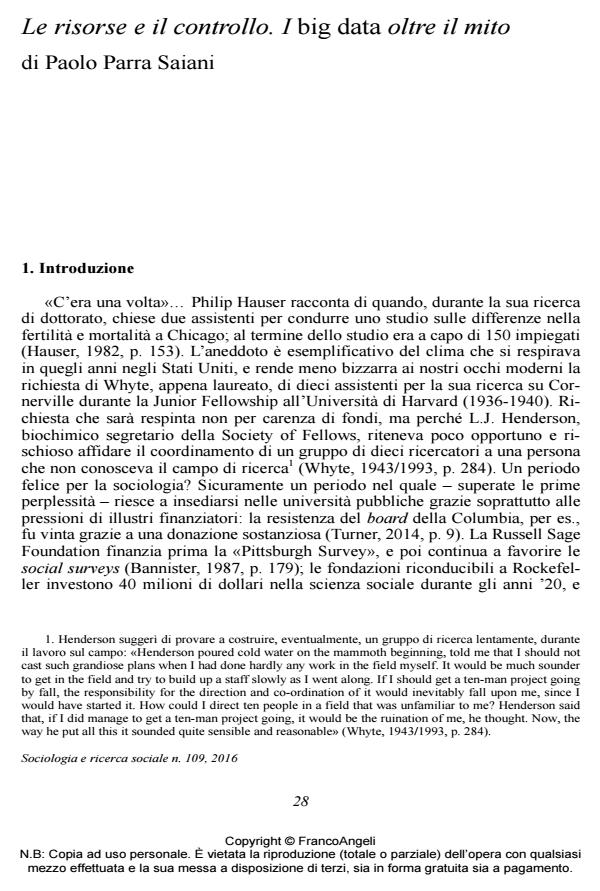Le risorse e il controllo. I big data oltre il mito
Titolo Rivista SOCIOLOGIA E RICERCA SOCIALE
Autori/Curatori Paolo Parra Saiani
Anno di pubblicazione 2016 Fascicolo 2016/109
Lingua Italiano Numero pagine 14 P. 28-41 Dimensione file 76 KB
DOI 10.3280/SR2016-109004
Il DOI è il codice a barre della proprietà intellettuale: per saperne di più
clicca qui
Qui sotto puoi vedere in anteprima la prima pagina di questo articolo.
Se questo articolo ti interessa, lo puoi acquistare (e scaricare in formato pdf) seguendo le facili indicazioni per acquistare il download credit. Acquista Download Credits per scaricare questo Articolo in formato PDF

FrancoAngeli è membro della Publishers International Linking Association, Inc (PILA)associazione indipendente e non profit per facilitare (attraverso i servizi tecnologici implementati da CrossRef.org) l’accesso degli studiosi ai contenuti digitali nelle pubblicazioni professionali e scientifiche
Cuts in research and in particular to social research periodically incite petitions and warnings from the main European scientific associations. What are the consequences and challenges posed by the reduction in resources available for research purposes? Can Big Data be an answer, a solution, a way to access the information in a cost-effective way? Or will they increase the gap between rich and poor universities, and the level of inequality between researchers? Is it a way to finally lay the foundations for the society of information and knowledge glimpsed in recent decades, or will the growing importance of Big Data in the research be accompanied by problems still not entirely clear?
- Handbook of Research on Advanced Research Methodologies for a Digital Society Costantino Cipolla, pp.42 (ISBN:9781799884736)
Paolo Parra Saiani, Le risorse e il controllo. I big data oltre il mito in "SOCIOLOGIA E RICERCA SOCIALE " 109/2016, pp 28-41, DOI: 10.3280/SR2016-109004